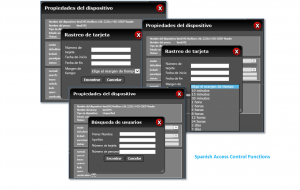From the Super Bowl to a visit by the Pope to the Olympics, large one-time events pose daunting challenges not just for security but also for traffic management, communications, food services, sanitary facilities, logistics, citizen safety and beyond.
Large and special events require the mobilization of multiple departments and organizations within a city or region as well as a system that can manage and oversee all aspects of the operations. While large events are a logistical challenge requiring the participation of hundreds and thousands of individuals from dozens of government and private entities, the lessons learned and the technology employed can provide long-term benefits for the community beyond the event. This is especially true when a solution is deployed to monitor and direct all of the moving parts. Once various silos of devices, sensors, subsystems are integrated to create real-time situational awareness, the city or region can continue to leverage and use the platform to create a Smart or Future City application that goes beyond that one-time occasion.
But getting your arms around events like these can be an overwhelming undertaking. How to plan and what to think about can be confusing and daunting. With that in mind, here are five typical challenges posed by large events, and ways to address them and provide the best—and safest—experience possible for everyone who attends:
Challenge #1: Deployed and On the Ground Security Assets Need Support.
You may know the old adage that “you can’t see the forest for the trees.” This especially applies to first responders in law enforcement and security. Police and security professionals are tasked with protecting the citizens and those who attend special events by understanding the entire situation and reacting appropriately to potential threats or risks. Yet they typically don’t have a bird’s eye view of what is taking place ahead of the event or in real-time beyond their line of sight.
By implementing a Converged Security & Information Management (CSIM) platform, local authorities can integrate all of the information and data that is needed to get that larger and more holistic view. The right CSIM will not only help law enforcement keep the event safe and secure, it will help every department and agency manage their operations and mitigate any risks.
Challenge #2: Video Surveillance Can’t Stand Alone.
Video surveillance cannot be the only sensor utilized for a large event. It is essential to have a centralized platform that can bring in all types of information from data networks, building security and fire detection feeds, communications platform, and social media inputs. Multiple sensors, security systems and other systems already in place need to be coordinated in real-time so that the data can be collected, and the right correlations made to best determine when and how to react.
Challenge #3: Cities Want To Be Proactive vs Reactive.
Security solutions need to be capable of taking a proactive approach to event security, beginning far before the event takes place. For example, the most recent CSIM platforms can scan social media and identify correlations that might signal an issue, such as protesters discussing how to disrupt a gathering, that may need to be considered in the preparations. With the right CSIM solution, officials can take action ahead of time with the goal of preventing an incident before it begins.
Challenge #4: Managing the Data Deluge.
Great security platforms should work like the human brain – holding onto information that is important and letting go of what is not relevant. Data correlation is the most intuitive and most forward-thinking way to approach security. Any platform under consideration should be capable of collecting data from disparate sensors, devices, systems and subsystems including social media and big data analytics. This data can then be filtered through a dynamic, real-time data visualization and presentation layer that can easily be controlled through a web browser or even a mobile device.
Challenge #5: Finding A Technology Platform That Can Rapidly Scale:
After a key event, cities often choose to keep their platform in place for day-to-day use. Some systems provide a mobile app where individuals can report anything suspicious that they might observe, including strange behavior at a supermarket, flooding in a neighborhood area, or perhaps a threatening conversation on social media. When numbers increase in this way, the system should be able to easily adjust to manage thousands of additional sensors and users without an issue.
While large scale events present numerous challenges, the right combination of people, process, and innovation provides the necessary tools and flexibility to address and manage a myriad of potential problems as they arise, both planned and unplanned, resulting in a safe and enjoyable event for everyone.






![Vidsys Enterprise 2020R2: improved video replay controls, auto reporting + more [release notes]](https://vidsys.com/wp-content/uploads/2020/05/Spanish-Access-Control-Functions.png)
